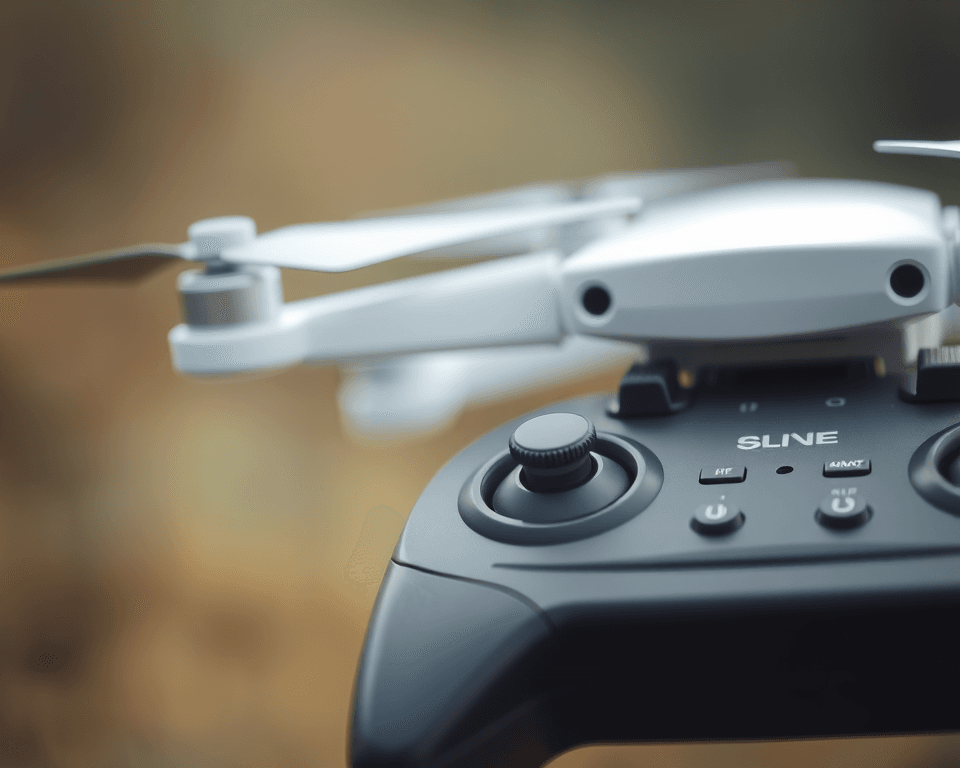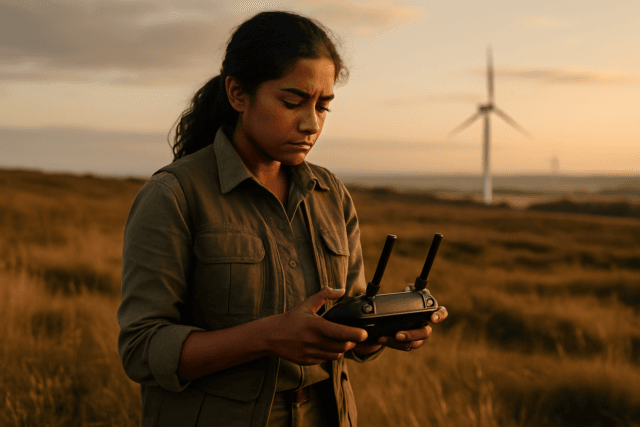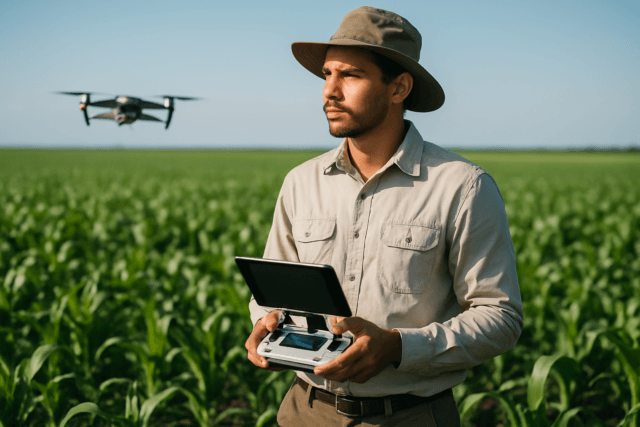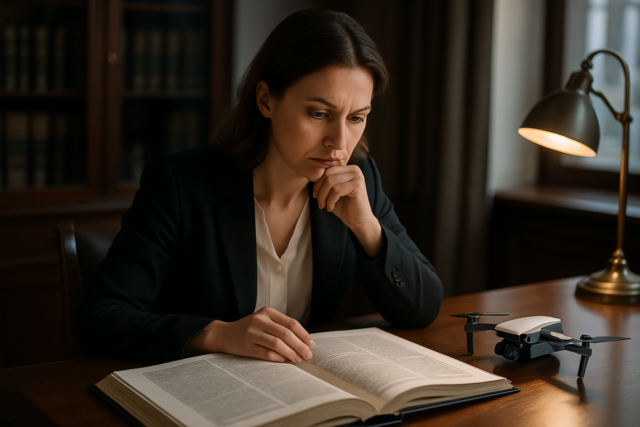Is your drone refusing to link with its controller? Don’t worry, this is a common issue, and there are plenty of ways to troubleshoot and get your drone back in the air. This guide will walk you through the most common causes of drone-controller connection problems and provide you with practical solutions to resolve them.
1. Battery Check: Power Up for Connection
Drone and Controller Batteries
- The Problem: Low or dead batteries in either the drone or the controller can prevent a stable connection. Insufficient power can disrupt the communication signals required for pairing.
- The Fix:
- Charge Fully: Ensure both the drone and the controller are fully charged before attempting to connect.
- Inspect Batteries: Look for any physical damage like dents or swelling, which could indicate a need for replacement.
- Replace if Necessary: If batteries are old or showing signs of damage, replace them to ensure optimal performance.
USB Devices
- The Problem: If you use a phone, a tablet or other device connected via a USB cable, then that may be the reason for the disconnection.
- The Fix: Make sure to check all the cables and USB connection ports to make sure that all connections are secure.
2. Pairing Procedures: Syncing Devices
Re-Pairing
- The Problem: Sometimes, the drone and controller simply lose their connection and need to be re-synced.
- The Fix:
- Power Cycle: Turn off both the drone and the controller.
- Refer to Manual: Consult your drone’s user manual for the specific pairing procedure.
- Re-Pair: Follow the manual’s instructions to re-establish the connection between the devices.
3. Interference: Clearing the Airwaves
Signal Interference
- The Problem: Radio interference from other electronic devices or physical obstacles can disrupt the signal between the drone and controller. Common sources include Wi-Fi routers, high-voltage power lines, large metal structures, and even other drone pilots.
- The Fix:
- Location, Location, Location: Fly in open areas away from potential sources of interference.
- Minimize Electronics: Reduce the number of nearby electronic devices that could cause interference.
- 5.8 GHz Frequency: If your drone supports it, switch to the 5.8 GHz frequency band, which is less prone to interference than 2.4 GHz.
- Avoid Obstacles: Be mindful of obstacles like trees and buildings that can block or reflect radio signals.
4. Firmware Updates: Keeping Things Current
Outdated Firmware
- The Problem: Outdated firmware on either the drone or the controller can cause compatibility issues and connection problems.
- The Fix:
- Check for Updates: Use the drone’s app or manufacturer’s website to check for available firmware updates for both the drone and the controller.
- Install Updates: Follow the instructions to download and install the latest firmware versions.
5. Hardware Issues: Checking the Connections
Physical Damage
- The Problem: Damaged antennas, cables, or ports can lead to connectivity issues.
- The Fix:
- Inspect Cables and Ports: Check for any visible damage to USB ports and cables. Ensure you’re using a high-quality cable designed for data transfer, not just charging.
- Check Antennas: Make sure the antennas on both the drone and controller are properly attached and undamaged.
- Internal Damage: If you’ve recently crashed your drone or dropped the controller, there may be internal damage affecting connectivity.
Controller USB Port
- The Problem: Intermittent connection may arise from using the side USB port to connect a device to the controller.
- The Fix: Try using the bottom USB port, as many reports indicate issues with the side port. If the problem persists, the port may be failing and require servicing.
6. Technical Glitches: Reboot and Reset
Rebooting Devices
- The Problem: Minor software glitches can sometimes prevent a successful connection.
- The Fix:
- Simple Reboot: Turn off both the drone and the controller.
- Wait: Wait a few seconds.
- Power On: Turn both devices back on.
Factory Reset
- The Problem: If a simple reboot doesn’t work, a factory reset can clear out more persistent software issues.
- The Fix: Consult your drone’s manual for instructions on how to perform a factory reset on both the drone and the controller. Warning: this will wipe all customized settings!
7. App Problems: Ensuring Compatibility and Proper Setup
App-Related Issues
- The Problem:
- Using the wrong app
- Outdated app version
- Poor connection between the mobile phone and cable
- A mobile phone protection case prevents the cable from being properly inserted
- “USB Debugging” is not enabled (for Android devices)
- The Fix:
- Use the correct app: Make sure that you are using the correct app, and that your drone is compatible with it.
- Update app: Make sure that you are using the latest version of the app.
- Cable connection: Try disconnecting and reconnecting the USB cable, and then check whether the remote controller is connected to the mobile phone. If possible, try another USB cable.
- USB Debugging: For an Android device, make sure “USB Debugging” is enabled.
8. Drone Controller Compatibility
Matching Controller to Drone
- The Problem: Not all drone controllers are created equal. Some are designed to work only with specific drone models or brands.
- The Fix:
- Check Compatibility: Before purchasing a drone or controller, verify that they are compatible.
- Refer to Documentation: Consult the drone and controller manuals or the manufacturer’s website for compatibility information.
Radio Compatibility
- The Problem: RC from one drone cannot be used with another drone.
- The Fix:
- Generally a transmitter from a certain manufacturer only works with receivers from that manufacturer. Then the frequency used must also match.
9. Environmental Factors: Avoiding Risky Locations
Natural and Man-Made Interference
- The Problem: Magnetic field changes as well as power lines and other sources of electromagnetic signals can cause FPV signal loss and interference.
- The Fix:
- Move away from any surrounding structures of this type before flying your drone.
10. Other Tips & Tricks
Firmware Compatibility
- The Problem: The drone firmware may not be compatible with the controller firmware.
- The Fix:
- When updating the drone firmware, update the controller firmware as well.
Headset Connection
- The Problem: Connecting a headset to a drone.
- The Fix:
- Power on your drone and ensure it is in a stable position.
- Turn on your controller and ensure it is also fully charged.
- Check if your drone and controller use a wireless connection protocol like Wi-Fi or Bluetooth.
- Follow the instructions provided with your drone to put it in pairing or linking mode.
- Make sure your FPV headset is charged and powered off.
- Check if your drone has a video transmitter (VTX) installed.
- Connect the video output cable from the drone to the corresponding input port on the FPV headset.
- Power on the drone and the FPV headset.
Propeller Check
- The Problem: Drone shakes in flight.
- The Fix:
- Check if the propeller blade screws are loose
- Check whether the propellers are broken
By systematically working through these troubleshooting steps, you should be able to identify and resolve the issue preventing your drone from connecting to the controller. Always prioritize safety and consult your drone’s manual for specific instructions and warnings.





